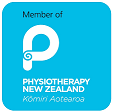
Welcome to the first of a series of exercise based newsletters from me that will make up a full body weight circuit that can be done without equipment, vast amounts of space or, lengthy periods of time.
I was first introduced to body weight circuits as a scrawny middle distance runner trying to build a bit of strength. As hard as I found them I can only say that they were effective and, they are exercises that not only have passed the test of time but form the mainstay of the approach that I now take to physiotherapy and rehabilitation. My ethos on exercise is that I want to see the benefits not only within the exercise setting but outside in any individuals day to day life. Consequently exercises I use mimic functional movement patterns that are used every day by us all, for example pushing and pulling movements or squatting and lunging movements or twisting and rotational movements. Therefore today we will be looking at the humble press up as an exercise that will mimic pushing actions.
First up what does a press up work, well done correctly it will challenge your whole body but specifically core, pectoral and tricep muscles. Let me explain further. Your core muscles are your foundation, they give you the base to work from without a sturdy core any functional movement will be less effective. What we know about these muscles is that they will fire and activate before any other skeletal muscle regardless of what the movement is – I could be pushing a door open or standing up from a chair and my core will fire first. The pectorals are a made up of two muscles – Pectoral major and Pectoral minor that principally influence movements of the shoulder. The tricep is a large muscle on the back of your arm. It primarily extends or straightens the elbow but, because it partly attaches on to the scapular (shoulder blade) it does have a role in shoulder movements.
Now knowing what a press up does the next question is how do we do perform one. The classic version of a press up starts with your hands beneath your shoulders, face down and with the next point of contact being your toes. The movement is to press up and away from the floor and then lower back down, elbows remain tucked in to your sides and your back remains straight without any increased curve in your lower back.
e99c39f7 013f 41e0 a322 66071854e6ab
What is important to know however is that this is not the only way to perform a press up. As with any exercise if you shorten it, destabilise it, start it from a different position you can influence it so, here are my rough progressions. Remember though what is key is that the variety of press up that is selected should challenge you over the sets and repetitions you select, for example if I wanted to do three sets of ten repetitions I want to be struggling to complete the last couple of repetitions, if I come nowhere near that or could do an extra three sets I have not selected the right variation, so here are my progressions:
851d5897 0476 4288 be9c 1217732404a8
psuh up 3
Good luck and watch out for the second instalment of the body weight circuit.











